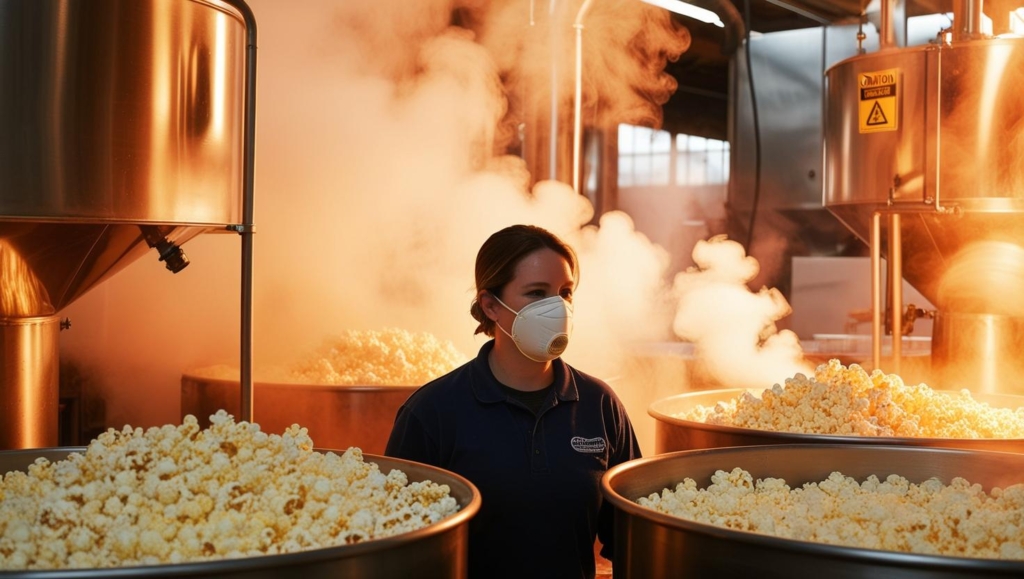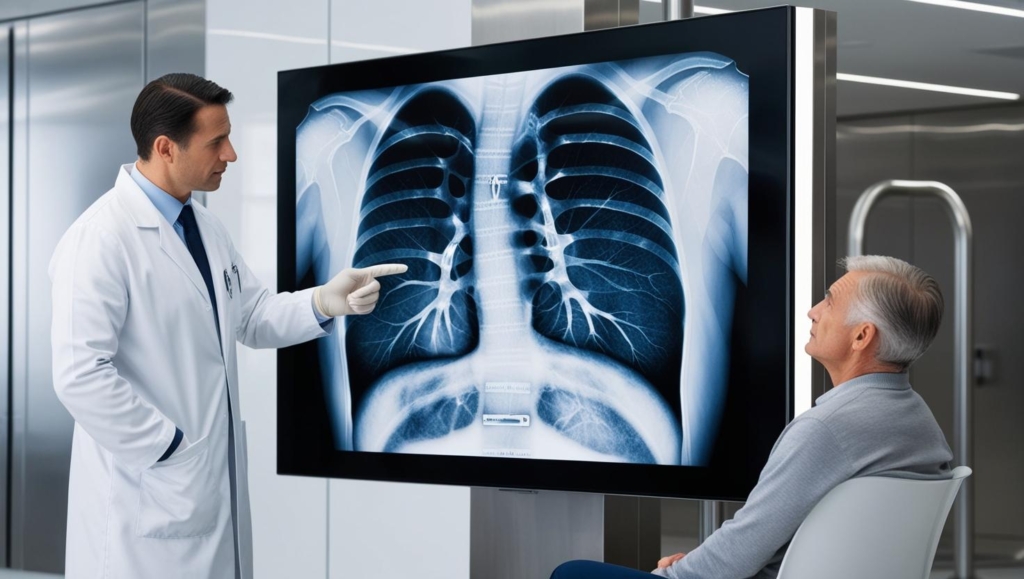What Is Popcorn Lung?
“Popcorn lung” is the nickname for a rare condition called bronchiolitis obliterans, a serious and irreversible lung disease that causes scarring and inflammation of the lung’s smallest airways—the bronchioles. Despite the name, it has nothing to do with eating popcorn. It got the nickname from a group of workers at a microwave popcorn factory who developed the disease after inhaling diacetyl, a chemical used to create buttery flavoring.
🧪 What Causes Popcorn Lung?

The most common causes include:
1. Diacetyl Exposure
Used in artificial flavorings like buttery popcorn and some e-cigarette vape juices. Inhalation over time damages the lung tissue.
2. Vaping & E-Cigarettes 🚭
Studies show that certain vape liquids contain diacetyl or similar chemicals, increasing the risk of popcorn lung—especially with flavored e-liquids.
3. Chemical Fumes & Toxic Gases
People who work around:
- Chemical plants
- Food flavoring factories
- Textile production
…may be at risk due to repeated exposure to harsh chemicals.
4. Post-Infection Scarring
In rare cases, serious lung infections like respiratory syncytial virus (RSV) or pneumonia can lead to bronchiolitis obliterans.
😮 Symptoms of Popcorn Lung
Symptoms can take weeks to months to appear, often mistaken for asthma or bronchitis:
- Persistent dry cough
- Shortness of breath (especially after light activity)
- Wheezing
- Fatigue
- Rapid breathing
- Unexplained weight loss
These symptoms get progressively worse over time if left untreated.
🩺 Can It Be Diagnosed and Treated?
Unfortunately, popcorn lung is irreversible—but early detection and management can slow its progression.
Diagnosis:
- High-resolution CT scan
- Pulmonary function tests
- Lung biopsy (in some cases)
Treatment Options:
- Corticosteroids to reduce inflammation
- Immunosuppressive drugs in severe cases
- Oxygen therapy for advanced conditions
- Lung transplant as a last resort
But the best approach? Prevention. Let’s talk about that next.
🛡️ How to Protect Yourself from Popcorn Lung

✅ Avoid Vaping or Use Only Verified, Diacetyl-Free Products
If you vape, research your e-liquids. Avoid flavored ones with buttery or creamy names unless proven diacetyl-free.
✅ Use Ventilation at Work
If you work around chemical fumes, ensure proper air ventilation, respirators, and protective gear.
✅ Don’t Ignore Symptoms
If you’ve been exposed and have a persistent cough or breathing trouble, get checked early. Early action slows damage.
❤️ Final Thoughts from Fittrru
Popcorn lung is serious—but awareness is your first line of defense. Whether you’re a concerned parent, a former vaper, or someone working in high-risk industries, knowing the risks and early symptoms can make a world of difference.
At Fittrru, we’re committed to helping you breathe better, live stronger, and stay informed—because real wellness starts with clarity, inside and out. 🌿
Primary Medical Sources & Research:
- Centers for Disease Control and Prevention (CDC):
- CDC – Flavorings-Related Lung Disease
- Highlights occupational risks, especially diacetyl exposure in food production environments.
- American Lung Association:
- Popcorn Lung (Bronchiolitis Obliterans)
- Provides information on causes, symptoms, and treatment options.
- National Institutes of Health (NIH):
- NIH – Bronchiolitis Obliterans
- Offers detailed clinical studies and diagnosis methods.
- Harvard Health Publishing:
- Discusses potential dangers of vaping-related lung issues, including diacetyl exposure.
- Mayo Clinic:
- Covers rare lung conditions and outlines general treatments for bronchiolitis obliterans.






